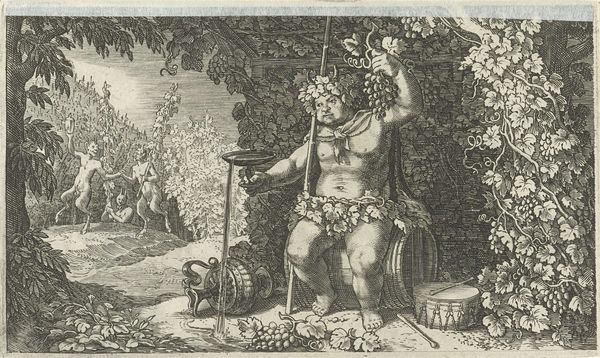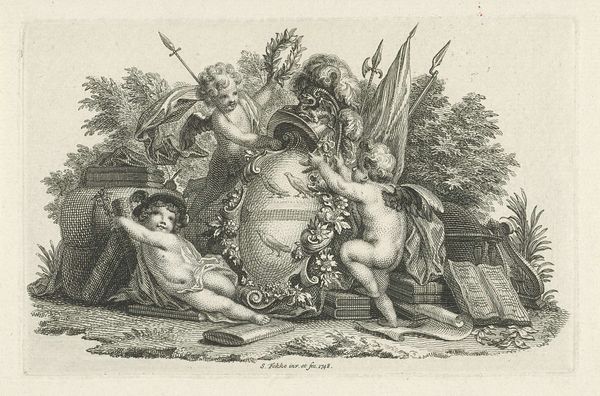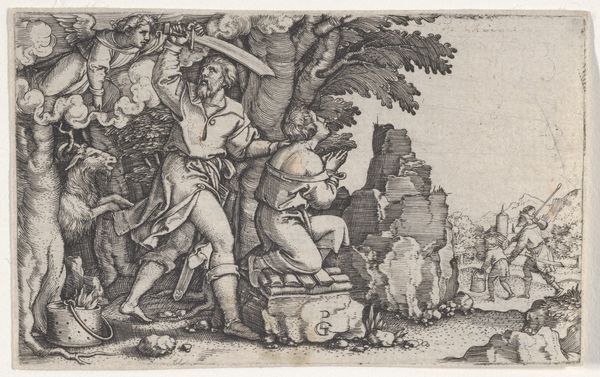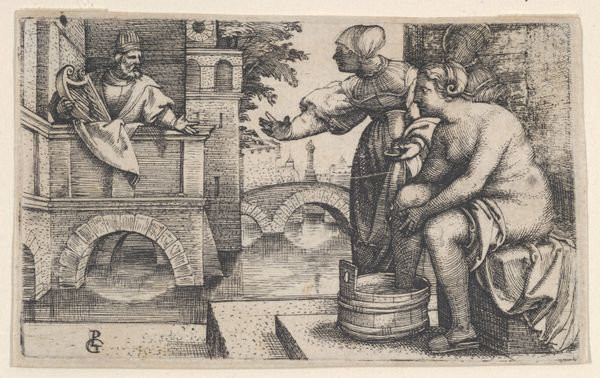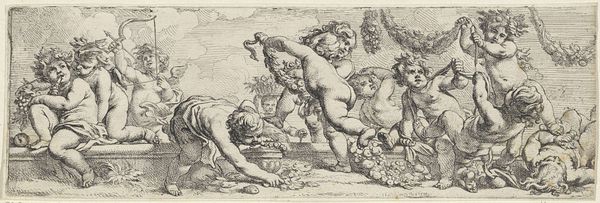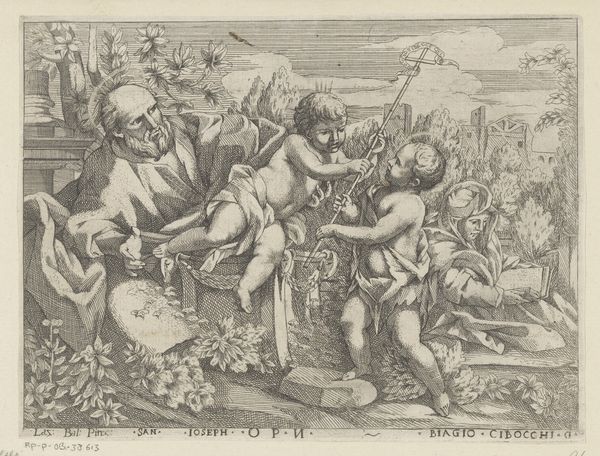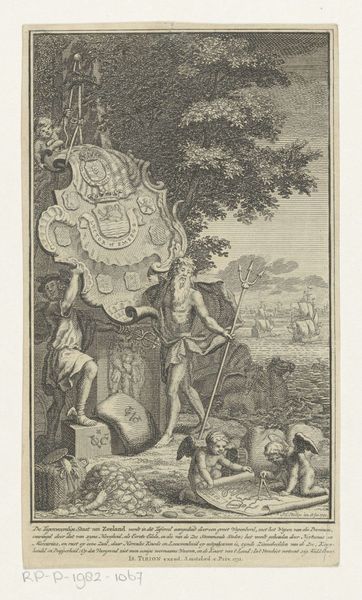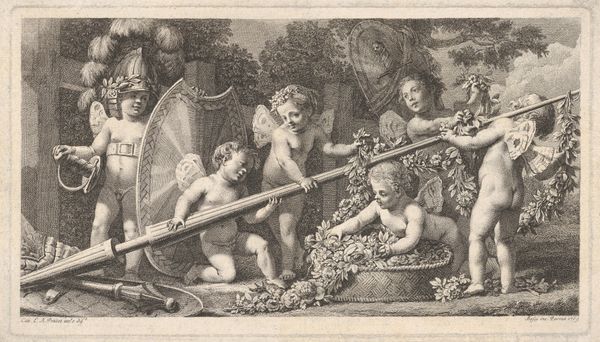
print, engraving
#
allegory
#
baroque
# print
#
figuration
#
genre-painting
#
history-painting
#
engraving
Dimensions: height 51 mm, width 68 mm
Copyright: Rijks Museum: Open Domain
Curator: At first glance, this tiny landscape seems to vibrate with hedonism, no? Almost like a drunken dream caught in monochrome. Editor: Indeed. What captures your eye is "Bacchus as god of wine" a print dating back to the mid-17th century, circa 1616 to 1657 created by Pieter Serwouters. It's a delightful engraving that deserves a closer examination. Curator: Tell me more...because to me the formal constraints, this dense web of lines is fighting against a feeling of joyfulness. The hatching creating texture and form actually flattens everything. Editor: Observe the composition—the youthful Bacchus is centrally positioned, enthroned upon a barrel, his pose exuding an air of relaxed dominance. He's surrounded by elements symbolic of revelry and abundance: a drum, brimming urn, frolicking satyrs. Serwouters employs the traditional techniques of engraving to convey not only the texture of the figures and objects but also a complex allegory. Curator: Allegory for sure, the heavy, almost chubby body of Bacchus looks too young to carry all of this symbolic weight. I do find interesting this use of chiaroscuro which renders Bacchus almost sculptural against a dynamic, albeit flat, backdrop filled with cavorting satyrs in different sizes, Editor: The use of line is particularly interesting. Serwouters expertly uses the varying densities of lines to model form and suggest spatial depth, though within the tightly controlled framework of the engraving medium, while at the same time all elements merge into a sort of pattern of inebriated pleasure. Curator: Yes, even in this limited medium of black and white. A sense of bacchanalian abandonment, very much against all this formal and almost mathematical constraint. As I contemplate on, I feel a paradoxical relationship emerging between form and freedom in this print... A certain chaos framed, or a jubilant order, perhaps? Editor: A delightful ambivalence that invites extended contemplation. This work encourages us to think about how art and our feelings, pleasure, and control may mirror and counter each other in surprising ways.
Comments
No comments
Be the first to comment and join the conversation on the ultimate creative platform.
